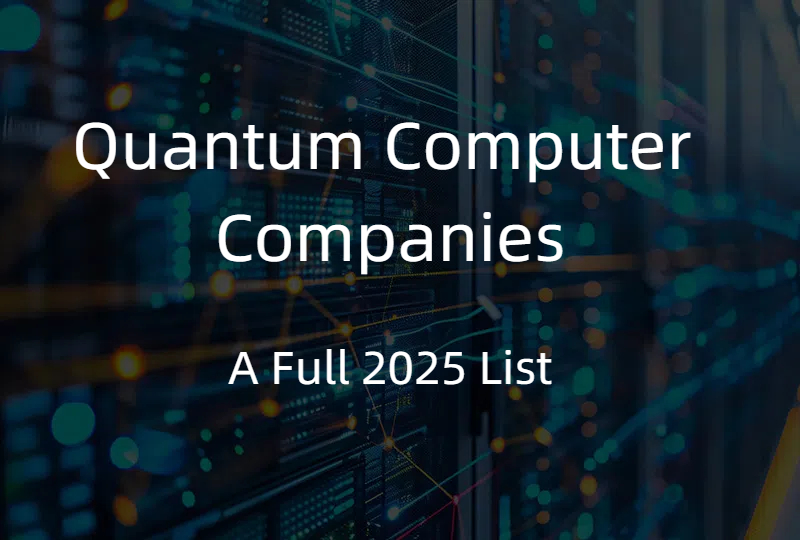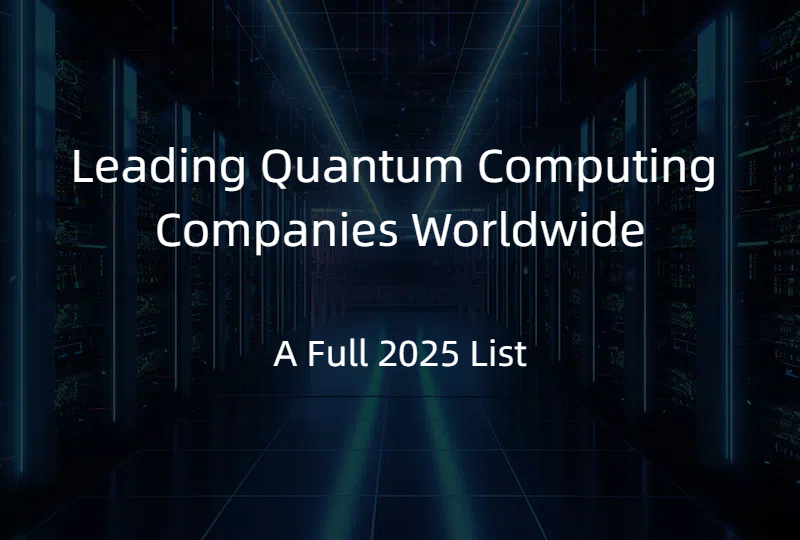Quantum Computing Funding: Explosive Growth and Strategic Investment in 2025
2025.10.31 · Blog quantum computing funding
The Quantum Funding Boom
Quantum computing has reached a critical inflection point in 2025, transitioning from speculative technology into a strategic investment priority commanding unprecedented capital flows. The sector attracted over $1.25 billion in the first quarter of 2025 alone—more than double the $550 million raised in Q1 2024—demonstrating a 128% year-over-year surge in quantum computing investment. By September 2025, the first three quarters had seen $3.77 billion in total equity funding, representing a dramatic acceleration that positions quantum computing as one of the fastest-growing deep tech sectors globally.
The funding landscape has fundamentally shifted from venture capital dominance toward a hybrid model combining private sector dynamism with accelerating government commitment. In 2024, private venture capital and private equity accounted for $1.3 billion (two-thirds of quantum startup investment), while government funding contributed $680 million (one-third). However, public funding is rapidly gaining momentum, rising 19 percentage points between 2023 and 2024 and now accounting for 34% of startup investment.
Government Funding: The Strategic Driver
Government investment in quantum computing transcends traditional research grants, emerging as a matter of national security and economic competitiveness. Global governments committed $1.8 billion to quantum technology initiatives in 2024, a figure already surpassed in 2025. By April 2025, public funding had reached $10 billion globally, driven by landmark announcements including Japan's $7.4 billion commitment and Spain's €808 million (approximately $900 million) investment over its 2025–2030 quantum strategy.
The United States leads this surge with multiple legislative initiatives. The National Quantum Initiative, originally authorized in 2018 with $1.2 billion over five years, is being reauthorized with substantially increased funding. The Department of Energy Quantum Leadership Act of 2025, introduced in February 2025, proposes $2.5 billion in quantum funding across fiscal years 2026–2030, with allocation across five key programs: $775 million for the DOE Quantum Information Science Research Program, $250 million for Quantum Instrumentation and Foundry, $875 million for National Quantum Information Science Research Centers, $500 million for Quantum Network Infrastructure, and $191 million for Quantum User Expansion for Science and Technology. The Department of Energy separately announced $65 million in 2024 for 10 quantum computing projects, specifically targeting software, control systems, and algorithmic development.
Additional regional initiatives include New Mexico's partnership with DARPA on the Quantum Frontier Project, committing $240 million combined ($120 million each from the state and DARPA) through 2029. Illinois allocated $500 million toward quantum technology development, establishing a quantum park that has attracted major players including PsiQuantum, IBM's National Quantum Algorithm Center, and DARPA's Illinois Quantum Proving Ground. Maryland launched the Capital of Quantum Initiative, targeting over $1 billion in combined public-private quantum computing investment. South Carolina has dedicated $15 million to quantum technology advancement.
Internationally, Australia committed $620 million to creating the world's first utility-scale, fault-tolerant quantum computer in partnership with PsiQuantum. Singapore pledged $222 million toward quantum technology research and talent development. China established a national venture fund of 1 trillion yuan (approximately $138 billion) for cutting-edge technologies including quantum computing, structured as a public-private partnership to drive rapid commercialization.
Europe is pursuing a coordinated strategy through its Quantum Flagship Program, allocating €1 billion over ten years, combined with national initiatives and the proposed "Quantum Valley" strategy promoting cross-border competence clusters and unified research infrastructure.
Private Sector Funding: Venture Capital and Strategic Investment
Venture capital funding remains the dominant private funding source, though investment patterns have undergone significant transformation. In 2024, venture capital and private equity contributed approximately $2.6 billion to quantum startups globally—a 58% increase from 2023's $1.6 billion. This 2024 funding was distributed across 62 funding rounds, with a critical shift toward larger, later-stage deals: Series B and beyond now account for approximately 63% of venture quantum investment, up from more balanced distributions in earlier years.
The funding landscape reveals a clear concentration of capital in proven companies. Two late-stage startups, PsiQuantum and Quantinuum, captured approximately half of all 2024 venture funding. PsiQuantum's $750 million government-backed funding round in March 2025—combining private venture investment from BlackRock with $620 million AUD in Australian government grants and equity—exemplifies the emerging public-private co-funding model. This represents the largest quantum funding round outside the United States.
Other major funding events include QuEra Computing's $230 million convertible funding round (February 2025), backed by Google Ventures and SoftBank. Quantum Machines raised $170 million in Series C funding (February 2025) from PSG Equity, Intel Capital, and Red Dot Capital Partners. Classiq secured $110 million in Series C funding (May 2025) from Entrée Capital, Samsung Next, HSBC, and NightDragon. Alice & Bob closed a $104 million Series B round (January 2025) focused on superconducting cat-qubit fault correction technology. IQM Quantum Computers, a Finland-based full-stack quantum developer, raised €200 million (approximately $220 million) in Series B funding in April 2025, with participation from strategic investors including pension funds and semiconductor companies.
SpinQ Technology, a Chinese quantum computing company founded in 2018 with backing from academics at Harvard, MIT, and Tsinghua University, completed a Series B funding round worth several hundred million RMB in mid-2025, supported by government-backed investors including CCB Private Equity Investment Management Company. The company generated 2024 revenues exceeding 50 million RMB and now serves over 200 universities, enterprises, and research institutions across more than 40 countries.
Corporate Investor Participation
Corporate venture capital and strategic investment from technology giants have intensified significantly. NVIDIA emerged as a major quantum investor in September 2025, backing three startups within a single week: Quantinuum ($600 million), PsiQuantum ($1 billion), and QuEra Computing. Intel Capital participates actively across multiple quantum investments, including Quantum Machines. Strategic partnerships between major technology companies and quantum startups have accelerated hardware-focused investment.
This corporate engagement reflects a fundamental shift in investment focus: hardware development now dominates funding rounds, reversing the software-heavy pattern of 2023–2024. Within quantum computing hardware investment, superconductor-based approaches and photonic quantum networks receive the largest shares of venture capital, although investors are diversifying across multiple competing qubit technologies including trapped ions, neutral atoms, and topological approaches.
Investment Distribution and Market Concentration
The quantum computing funding landscape exhibits distinct geographic patterns. The United States and United Kingdom collectively account for more than 60% of global quantum venture investment across 2012–2024. However, significant geographic diversification is emerging. European startups captured 47.5% of quantum venture funding in Q1 2025—a 16.5% increase from the previous year. Asia-Pacific regions, particularly China, are rapidly expanding quantum investment through government-backed channels.
Venture capital investment breaks down by source across historical periods. Between 2001 and 2021, venture capitalists provided 43% of quantum technology funding, private investments 30%, corporate sources 14%, public investment 5%, angels 5%, and incubators 2%. However, this distribution shifted dramatically after 2022: venture capital now accounts for 45% of funding, private investments 39%, angel investors 9%, corporate 5%, public 1%, and incubators 1%.
Within the quantum technology funding landscape broadly, quantum computing commands approximately 80% of total investment. Within quantum computing specifically, companies securing $1.6 billion across 2024, quantum software companies attracted $621 million, and other quantum technologies including sensing and communication applications divided the remainder.
Funding by Development Stage
Institutional investment patterns reveal significant concentration in later-stage funding. Series B and later-stage rounds now represent approximately 63% of venture quantum investment—a dramatic shift from earlier periods when seed, Series A, and Series C funding were more evenly distributed. This reflects growing investor confidence in technology maturity and commercialization readiness among surviving startups.
Early-stage investment focus has shifted toward components and application software development rather than foundational hardware research. As the sector matures, McKinsey research indicates an anticipated value shift toward application software over the next five to ten years, with standardization of quantum hardware components enabling higher-margin software and services businesses.
Quantum as a Service: Cloud-Based Funding Models
A significant funding catalyst has emerged through Quantum-as-a-Service (QaaS) platforms, which democratize access to quantum computing and create new revenue streams. Major cloud service providers including IBM Quantum Platform, Microsoft Azure Quantum, Amazon Braket, and SpinQ Cloud offer subscription-based access to quantum processors, reducing barriers to enterprise adoption and accelerating application development.
SpinQ's private quantum cloud services, available through custom enterprise deployments, represent one example of infrastructure monetization. Pricing tiers range from tens of thousands of dollars for educational systems to enterprise-scale arrangements, with hourly cloud computing costs of $1,000–$5,000 per quantum processing hour for public cloud services.
IPO Pipeline and Public Market Access
Multiple quantum companies are advancing toward public market listings through both traditional IPO and SPAC (Special Purpose Acquisition Company) pathways, potentially creating new investment vehicles. Infleqtion, a neutral-atom quantum and sensing specialist, will merge with Churchill Capital Corp X in a SPAC transaction valuing the company at $1.8 billion with $540 million raised. Horizon Quantum Computing is merging with dMY Squared (NYSE: DMYY) in a Q1 2026 close, delivering equity valued near $1 billion.
Additional companies reportedly preparing for public listings include PsiQuantum (photonic qubits), Quantinuum (trapped ions), and PASQAL (neutral atoms). Existing pure-play quantum public companies include IonQ (IONQ), D-Wave Systems (QBTS), Rigetti Computing (RGTI), Quantum Computing Inc (QUBT), and Arqit Quantum (ARQQ), collectively providing direct equity exposure to the sector.
Market Projections and Future Outlook
Investment funding is supporting rapid market expansion. Research organizations project the global quantum computing market will grow from approximately $1.3 billion in 2024 to between $5.3 billion and $20.2 billion by 2029–2030, representing compound annual growth rates of 32.7% to 41.8%. McKinsey projects that by 2035, quantum technologies could generate up to $97 billion in revenue worldwide, with quantum computing capturing $72 billion of that total.
Funding annualized run rates suggest this growth trajectory is well-supported. Through the first five months of 2025, approximately 70% of 2024's total quantum funding had been deployed despite only 25% of the number of funding rounds, indicating pronounced concentration in fewer, substantially larger transactions. This pattern reflects institutional validation of quantum technology maturity.
Critical Funding Drivers
Several factors are accelerating quantum computing funding. Technological breakthroughs including Google's Willow chip (105 qubits with exponential error reduction), IBM's Starling roadmap (targeting 200 logical qubits by 2029), and Microsoft's Majorana 1 topological qubit architecture have catalyzed investor confidence. Practical quantum advantage demonstrations, including IonQ and Ansys achieving a 12% speed-up over classical computing in medical-device simulation in March 2025, validate near-term commercialization potential.
The United Nations designation of 2025 as the International Year of Quantum Science and Technology amplifies awareness and institutional validation of the field. Geopolitical competition across the U.S., China, Europe, and other nations drives government commitment to quantum technology as a strategic priority. Enterprise demand from financial services, pharmaceuticals, materials science, and other sectors seeking quantum advantage in optimization, simulation, and machine learning creates clear commercialization pathways.
Risks and Funding Sustainability
Despite unprecedented funding flows, quantum computing remains a high-risk investment with substantial technical obstacles. Current quantum error rates stand at 0.1-1%, while fault-tolerant systems require rates below 0.0001%. Scaling from current 100-qubit systems to millions of qubits while maintaining error correction poses formidable engineering challenges.
Funding sustainability depends on maintaining technology progress. Pure-play quantum companies remain unprofitable or early-revenue, with valuations substantially exceeding near-term cash flow generation. The sector is vulnerable to funding cycles and technology setbacks that could materially reduce investor appetite.
Conclusion: Strategic Imperative Driving Capital Deployment
Quantum computing funding has achieved critical mass as both venture capital and government sources deploy capital at unprecedented scale. The convergence of $3.77 billion in equity funding by September 2025, over $10 billion in global government commitments by April 2025, and strategic corporate investment from technology giants establishes quantum computing as a justified recipient of deep technology capital.
The funding landscape reveals fundamental shifts toward larger late-stage rounds, greater government participation in co-funding arrangements, and pronounced geographic diversification. For investors, fund managers, and enterprises, 2025 represents a pivotal moment where quantum technology has transitioned from speculative research into a capital-intensive commercialization phase supported by institutional confidence in near-term practical applications and long-term transformative potential.
Featured Content






